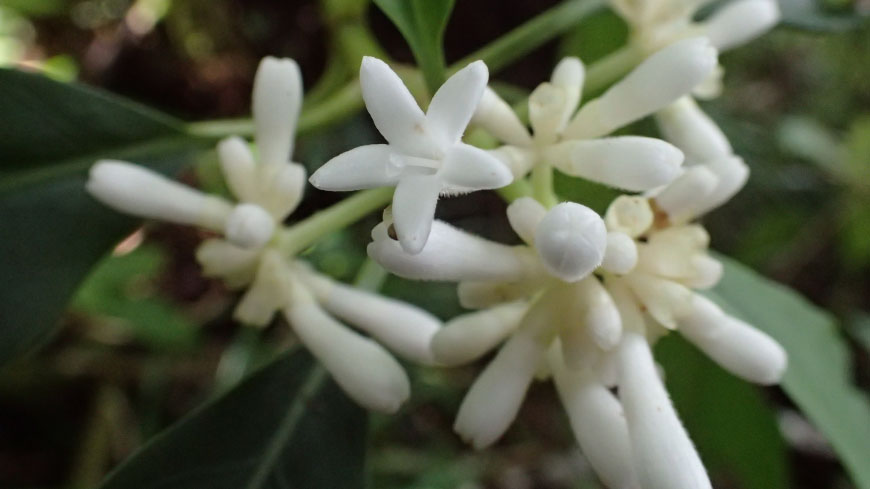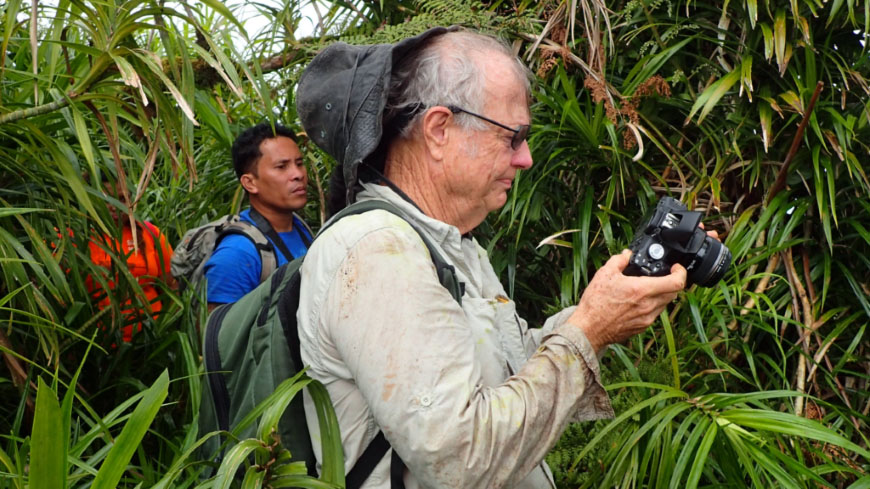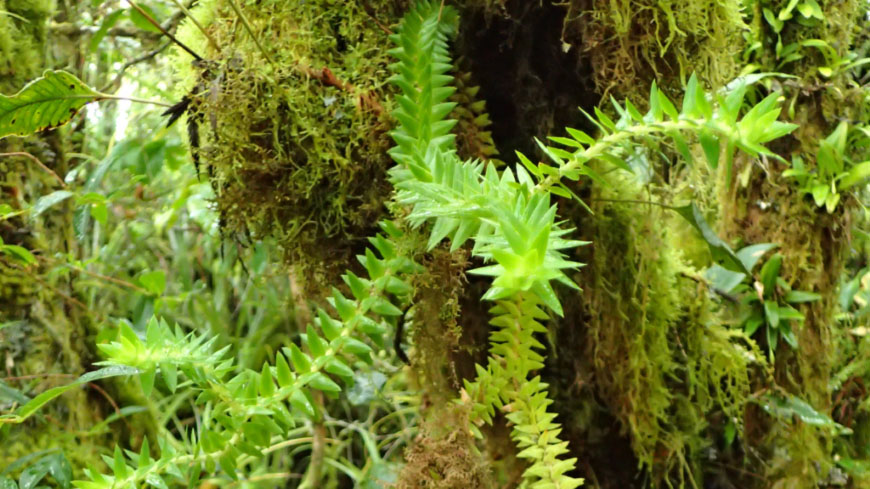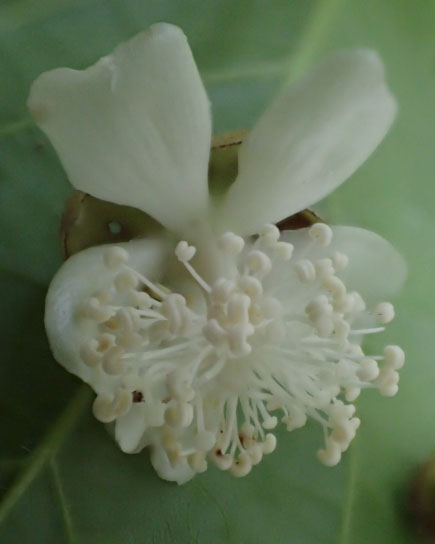By Dr. David H. Lorence, Senior Research Botanist

The saga of the Flora of Samoa began on January 16, 1968, when W. Arthur (Art) Whistler arrived in Samoa as a Peace Corps volunteer. Known locally as Pisikoa, Peace Corps volunteers were often assigned to teach in host country schools, and Art taught biology in Samoa for three years. With a master’s degree in botany, Art soon developed a keen interest in Samoan plants. One year after his Peace Corps stint ended, Art returned to pursue botanical collecting in earnest, eventually botanizing on every island in the archipelago. For the next half century, Art visited Samoa every year but one. His 4,900 collections of herbarium specimens include over 90 percent of the known flowering plants and ferns of Samoa.
Art’s first set of specimens are stored at the National Tropical Botanical Garden’s herbarium (known as PTBG based on Pacific Tropical Botanical Garden) with duplicates (especially early collections) sent to many other herbaria, including the Bishop Museum in Honolulu, Royal Botanic Gardens Kew, and the Smithsonian Institution.
After earning a PhD in botany in 1979, Art met Dr. William Theobald, NTBG’s former director, who offered him the position of ethnobotanist which he held from 1983 to 1992. Art also lectured in botany at the University of Hawaii and, for many years, worked as an independent botany consultant in Hawaii and throughout the Pacific. Art published numerous articles and books on Pacific botany and ethnobotany and always dreamed of publishing a Flora of Samoa that would serve as a definitive compilation and identification guide.

In 2015, NTBG commissioned Art as a McBryde Fellow to prepare a written Flora of Samoa for publication. In what was to be the culmination of a career dedicated to bringing knowledge of the flora and conservation by local communities to a scientific audience, Art had nearly completed the flora’s manuscript, but passed away in April 2020 from Covid-19 complications before it could be finalized.
Following this tragic and unexpected loss, Dr. Warren Wagner, curator of botany with the Smithsonian Institution, and I agreed we would complete the final scientific editing and updating of the manuscript to ensure the flora was published.
Publication of the Flora of Samoa is urgent as the plant life (particularly in upland ecosystems) is rapidly being lost to invasive plants and animals, land degradation, and threats from climate change. The Flora of Samoa has long been recognized as a priority by the International Union for Conservation of Nature (IUCN) and is consistent with Global Strategy for Plant Conservation goals, including Target 1 of developing an online flora of all known plants.
Samoa is located in the South Pacific, between 500 and 700 miles north and east of Fiji and Tonga. Samoa (formerly called Western Samoa) is comprised of two main islands with the U.S. territory American Samoa to the east. Samoa occupies an important place in the Polynesia-Micronesia biodiversity hotspot, but until now, no published flora existed as a source of essential data for managing and conserving Samoa’s biological diversity.
The Samoan archipelago plays a central role in the Pacific region and the argument for a published flora is strong. First, although the islands’ plants have historically been under-explored, thanks to decades of research by Art, organizational and research infrastructure is in place, and a wealth of preliminary information has been previously published. Additionally, Samoa’s plant diversity is threatened by development, land conversion, and other human activities with Pacific islands and atolls among the first places to be impacted by sea level rise.
Culturally and biologically, Samoa is a cohesive area that would benefit from a single, modern plant diversity resource for studying the effects of climate change. With comparable floras published for Fiji, Hawaii, and the Marquesas Islands, it’s time Samoa had its own printed flora. The completion of this work will greatly aid biologists, ornithologists, vegetation ecologists, and resource managers. A detailed synopsis of the plants is the first step needed for the study and preservation of rare or threatened endemic Samoan species and habitats.

With 541 native species (186 of which are endemic) and nearly 300 naturalized flowering plant species and 225 ferns and fern allies, Samoa has the second largest native vascular flora in Polynesia after the Hawaiian Islands. About 34 percent of Samoa’s native plants are found nowhere else, compared with 90 and 47 percent endemism among the floras of Hawaii and the Marquesas respectively.
Compared with the flora of Fiji, the Samoan flora is about one-third as large, but they share many floristic affinities due to their relative proximity. The largest family of flowering plants in Samoa is the orchid family (Orchidaceae), with 101 native species. No other Polynesian islands have such a rich orchid flora. Samoa’s second largest family is Rubiaceae, the coffee family, with 47 native and five naturalized species.
In 2002 and 2003, NTBG’s Breadfruit Institute director Dr. Diane Ragone and I participated in botanical and ethnobotanical inventory field trips in the National Park of American Samoa for a project funded by the U. S. National Park Service. In 2016, Art accompanied NTBG scientists Tim Flynn, Ken Wood, myself, and two young botanical researchers on a six-week, grant-funded botanical expedition to Samoa’s two largest islands, Savaii and Upolu. Special emphasis was placed on searching for populations of 15 poorly known or “lost” flowering plant species, some not collected in over a century, as well as documenting populations and distribution of additional rare plants. Although the lost species were not rediscovered, two new fern species were. Collaboration with Samoa’s Ministry of Natural Resources and the Environment staff was an essential component of the field work.
From the early 1980s until Art’s untimely passing in 2020, he dedicated himself to studying, collecting, and conserving the plants of Samoa. Art’s manuscript included a considerable number of taxonomic treatments with an emphasis on finalizing all remaining work in recent years. Over those four decades, parts of the original manuscript fell out of sync with other new Pacific botany publications. In the final phase of the peer-review process, Warren and I were in discussion with Art about updates and changes. In Art’s absence, we completed these necessary changes to reflect the latest taxonomic classifications.
Ultimately, the style, format, and content of the manuscript remain in accordance with Art’s wishes and intent. We are deeply honored to get this extraordinary body of research across the finish line, publishing what represents Art’s magnum opus, a definitive publication on the plants of Samoa that will be used for generations to come.
An enthusiastic photographer, Art had selected nearly one thousand plant photos, mostly taken by him, for inclusion in the flora which will also feature over 150 beautiful color figures by Smithsonian illustrator Alice Tangerini, based on Art’s photos. As of the summer of 2021, work on the manuscript is nearly complete and slated for publication by NTBG in 2022 (depending on funding). The published book will comprise nearly 800 pages and represents a milestone in the study of Pacific Island floras as well as the embodiment of Art Whistler’s life-long love for the people and plants of the Samoan Islands.

Five Samoan plant species are named for botanist Art Whistler: three members of the Orchid family (Calanthe whistleri, Dendrobium whistleri, and Taeniophyllum whistleri), Hoya whistleri (Dogbane family), and Abutilon whistleri (Hibiscus family), pictured here as photographed by NTBG research biologist Ken Wood on Samoa’s Savaii island where it is endemic to cloud forests above 1,100 m.